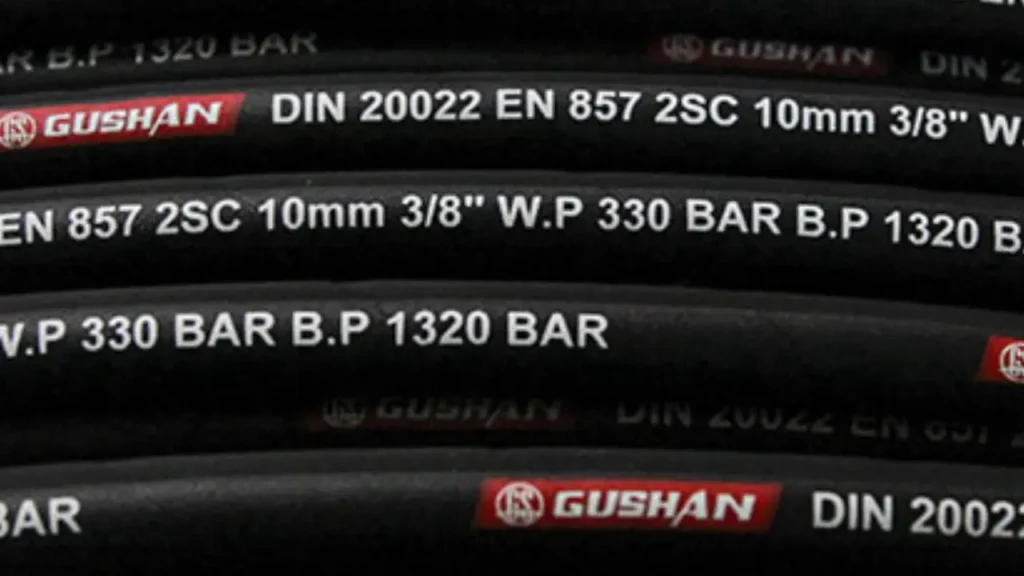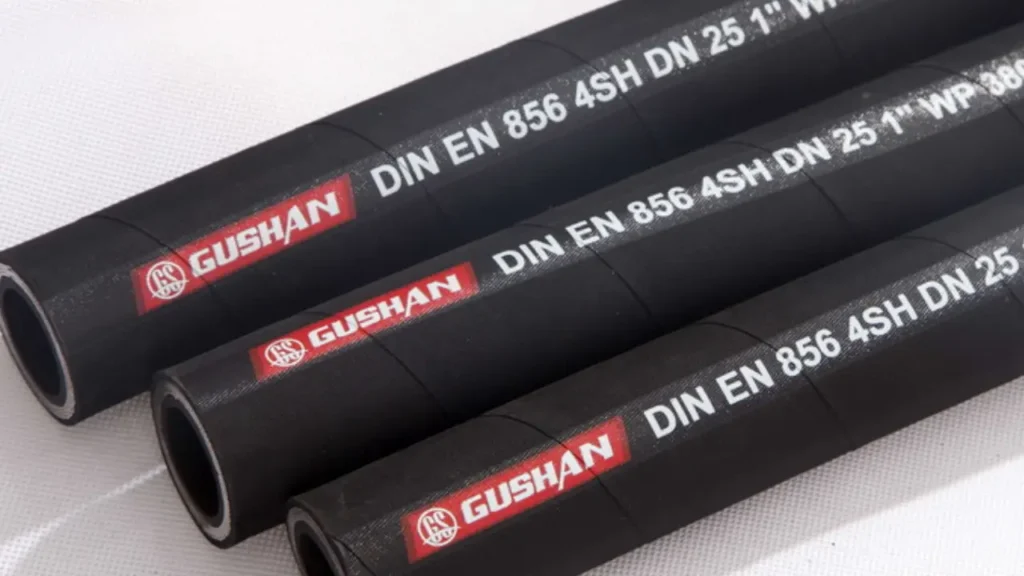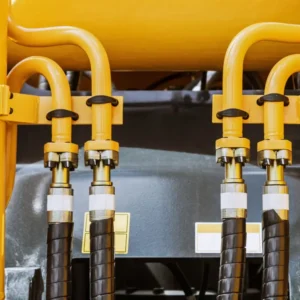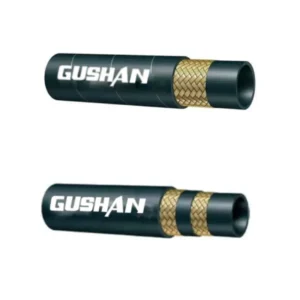Are you ready to tackle your next hydraulic hose replacement project?
This guide will walk you through the essential steps to ensure a smooth and successful ordering process. From understanding your specific needs to selecting the right hose and fittings, we’ve got you covered.
What is a Hydraulic Hose

A hydraulic hose is a flexible tube designed to transmit high-pressure hydraulic fluid. It’s a critical component in many industrial and mobile equipment applications, such as construction machinery, agricultural equipment, and manufacturing processes.
Hydraulic Hose Market
The hydraulic hose market is a significant industry that plays a crucial role in various sectors, including construction, mining, agriculture, and manufacturing. These hoses are essential for transmitting high-pressure hydraulic fluid, and powering machinery and equipment.
Key Hydraulic Hose Market Trends:
- Increasing Demand from Construction and Mining: The growth of infrastructure projects and mining operations worldwide is driving the demand for robust and durable hydraulic hoses.
- Advancements in Technology: The development of innovative materials and manufacturing techniques is leading to the production of more efficient and reliable hydraulic hoses.
- Rising Adoption in Industrial Automation: As industries automate their processes, the need for hydraulic hoses to power automated machinery is increasing.
- Focus on Sustainability: The industry is shifting towards environmentally friendly materials and manufacturing processes to reduce its environmental impact.
Hydraulic Hose Market Size and Growth:
The global hydraulic hose market is projected to grow at a CAGR of around 5% over the forecast period. Factors such as increasing industrialization, urbanization, and rising disposable incomes are contributing to this growth.
The future of the hydraulic hose market looks promising, driven by ongoing technological advancements and increasing demand from various industries. As the world modernizes and industrializes, the need for reliable and efficient hydraulic hoses will remain strong.
Key Considerations Before Ordering Hydraulic Hose
Before ordering a hydraulic hose, it’s crucial to consider the following factors to ensure optimal performance and safety:
1. Pressure Rating:
- Working Pressure: Determine the maximum pressure the hose will be subjected to during normal operation.
- Burst Pressure: Consider the hose’s ability to withstand sudden pressure spikes or accidental overpressure.
- Safety Factor: Choose a hose with a pressure rating that exceeds your system’s working pressure to account for potential fluctuations and safety margins.
2. Temperature Range:
- Operating Temperature: Identify the minimum and maximum temperatures the hose will encounter.
- Fluid Compatibility: Ensure the hose material is compatible with the hydraulic fluid used in your system.
- Environmental Factors: Consider factors like exposure to UV radiation, extreme weather conditions, and chemical agents.
3. Hydraulic Hose Material:
- Rubber: Suitable for general-purpose applications and moderate pressures.
- Thermoplastic: Offers excellent flexibility, resistance to chemicals, and temperature extremes.
- Wire Braid: Provides additional strength and reinforcement for high-pressure applications.
- Textile Braid: Offers good flexibility and resistance to abrasion.
4. Hydraulic Hose Size and Length:
- Inside Diameter (ID): Ensure the ID is sufficient to handle the required flow rate.
- Outside Diameter (OD): Consider the OD for compatibility with fittings and routing.
- Length: Accurately measure the required length, accounting for bends, curves, and hydraulic hose installation clearances.
5. End Fittings:
- Type: Select the appropriate type of fittings based on the system’s requirements (e.g., swivels, o-ring face seal, pipe thread).
- Size: Ensure the fittings are compatible with the hose’s ID and OD.
- Orientation: Specify the angle and direction of the fittings to match your system’s configuration.
6. Hydraulic Hose Bending Radius:
- Minimum Bend Radius: Ensure the hose can be bent without damage or compromising its performance.
- Installation Routing: Consider the space available for routing the hose and avoid sharp bends.
7. Application Environment:
- Exposure to Chemicals: Choose a hose material resistant to the specific chemicals in your application.
- Abrasion Resistance: If the hose is exposed to abrasive surfaces, select a hose with a durable outer cover.
- Weather Conditions: Consider the impact of extreme weather conditions on the hose’s performance and lifespan.
By carefully considering these factors, you can select the appropriate hydraulic hose for your specific application, ensuring optimal performance, safety, and longevity.
How to Order Hydraulic Hose

1. Identify Your Needs
- Hose Size (ID): This determines the flow rate and pressure capacity of the hose. Consider factors like the pump’s output and the system’s operating pressure.
- Hose Length: Measure the required length, accounting for installation and potential future adjustments.
- Pressure Rating: Ensure the hose can withstand the maximum pressure your system will generate. This information is often found on the old hose or in the system’s manual.
- Temperature Range: Consider both the highest and lowest temperatures the hose will be exposed to. Extreme temperatures can affect the hose’s performance and lifespan.
- Fluid Compatibility: Choose a hose material that is compatible with the hydraulic fluid you’re using. Incompatible fluids can cause the hose to deteriorate and lead to leaks.
- End Fittings: Specify the type and size of fittings needed to connect the hose to your system. Common types include swivels, o-ring face seal (ORFS), and pipe thread fittings.
2. Gather Information
- Old Hose: If you’re replacing an existing hose, carefully inspect it to determine the size, pressure rating, and end fittings.
- System Specifications: Consult your system’s manual or contact the manufacturer for specific information about the hydraulic fluid, pressure, and temperature requirements.
3. Choose a Hydraulic Hose Manufacturer
- Local Hydraulic Shops: These shops often have a wide range of hoses and fittings and can provide custom solutions. They can also offer expert advice on hose selection and installation.
- Online Retailers: Many online retailers offer a variety of hydraulic hoses and fittings. However, choosing a reputable supplier with a good track record is important.
- Manufacturer‘s Representatives: These representatives can provide technical support and assistance with ordering. They can also help you select the right hose for your specific application.
4. Place Your Order
- Provide Detailed Information: Clearly communicate the specific measurements, pressure rating, temperature range, fluid compatibility, and end fitting requirements.
- Consider Custom Solutions: If your needs are unique, discuss custom hose assembly options with the supplier. They can create a hose that is tailored to your specific application.
- Confirm Delivery: Specify the desired delivery time and shipping address. Consider factors like shipping time and potential delays when planning your project.
Where Can You Order Hydraulic Hose
When sourcing hydraulic hoses, consider these reliable channels:
1. Local Hydraulic Shops
- Advantages: Personalized service, custom hose assemblies, immediate availability.
- How to Find: Check local yellow pages, online directories, or ask industry professionals for recommendations.
2. Industrial Supply Stores
- Advantages: Wide range of products, convenient locations, often offer bulk discounts.
- Popular Stores: Grainger, MSC Industrial Supply, Fastenal
3. Online Retailers
- Advantages: Easy comparison, 24/7 access, competitive pricing, often offer free shipping.
- Popular Online Stores: Amazon, eBay, Hydraulic Hose Superstore
4. Hydraulic Hose Manufacturer’s Direct Sales
- Advantages: High-quality products, direct technical support, customized solutions.
- Major Manufacturers: Parker Hannifin, Eaton, Gates, Continental
5. Hydraulic Hose Distributors
- Advantages: Specialized expertise, extensive inventory, quick delivery.
- Popular Distributors: Motion Industries, Grainger, MSC Industrial Supply
Tips for Successful Hydraulic Hose Ordering
To ensure a successful hydraulic hose order, consider these essential tips:
1. Accurate Measurements:
- Inside Diameter (ID): Precisely measure the inner diameter to ensure proper fit and flow rate.
- Outside Diameter (OD): Measure the outer diameter to verify compatibility with fittings and routing.
- Length: Accurately measure the required length, considering bends, curves, and installation clearances.
2. Pressure Rating:
- Working Pressure: Determine the maximum pressure the hose will be subjected to during normal operation.
- Burst Pressure: Consider the hose’s ability to withstand sudden pressure spikes or accidental overpressure.
- Safety Factor: Choose a hose with a pressure rating that exceeds your system’s working pressure to account for potential fluctuations and safety margins.
3. Temperature Range:
- Operating Temperature: Identify the minimum and maximum temperatures the hose will encounter.
- Fluid Compatibility: Ensure the hose material is compatible with the hydraulic fluid used in your system.
- Environmental Factors: Consider factors like exposure to UV radiation, extreme weather conditions, and chemical agents.
4. Hose Material:
- Rubber: Suitable for general-purpose applications and moderate pressures.
- Thermoplastic: Offers excellent flexibility, resistance to chemicals, and temperature extremes.
- Wire Braid: Provides additional strength and reinforcement for high-pressure applications.
- Textile Braid: Offers good flexibility and resistance to abrasion.
5. End Fittings:
- Type: Select the appropriate type of fittings based on the system’s requirements (e.g., swivels, o-ring face seal, pipe thread).
- Size: Ensure the fittings are compatible with the hose’s ID and OD.
- Orientation: Specify the angle and direction of the fittings to match your system’s configuration.
6. Bending Radius:
- Minimum Bend Radius: Ensure the hose can be bent without damage or compromising its performance.
- Installation Routing: Consider the space available for routing the hose and avoid sharp bends.
7. Application Environment:
- Exposure to Chemicals: Choose a hose material resistant to the specific chemicals in your application.
- Abrasion Resistance: If the hose is exposed to abrasive surfaces, select a hose with a durable outer cover.
- Weather Conditions: Consider the impact of extreme weather conditions on the hose’s performance and lifespan.
8. Supplier Selection:
- Reputation: Choose a reputable supplier with a track record of providing quality products.
- Technical Expertise: Seek suppliers with experienced staff who can provide guidance and support.
- Custom Solutions: Consider suppliers that offer custom hose assemblies to meet specific needs.
9. Certification and Standards:
- SAE: Society of Automotive Engineers
- EN: European Norm
- ISO: International Organization for Standardization
Ensure the hose and fittings comply with relevant industry standards to guarantee quality and safety.
By carefully considering these factors and following these tips, you can ensure that you order the right hydraulic hose for your specific application, optimizing system performance and minimizing downtime.
Conclusion
Ordering hydraulic hose can be a complex process, but by following these steps and considering the factors discussed, you can ensure that you select the right hose for your specific application. Remember to prioritize safety, performance, and durability when making your choice.
Ready to get started on your hydraulic hose project? Request a quote today and let our experts help you find the perfect solution for your needs.



